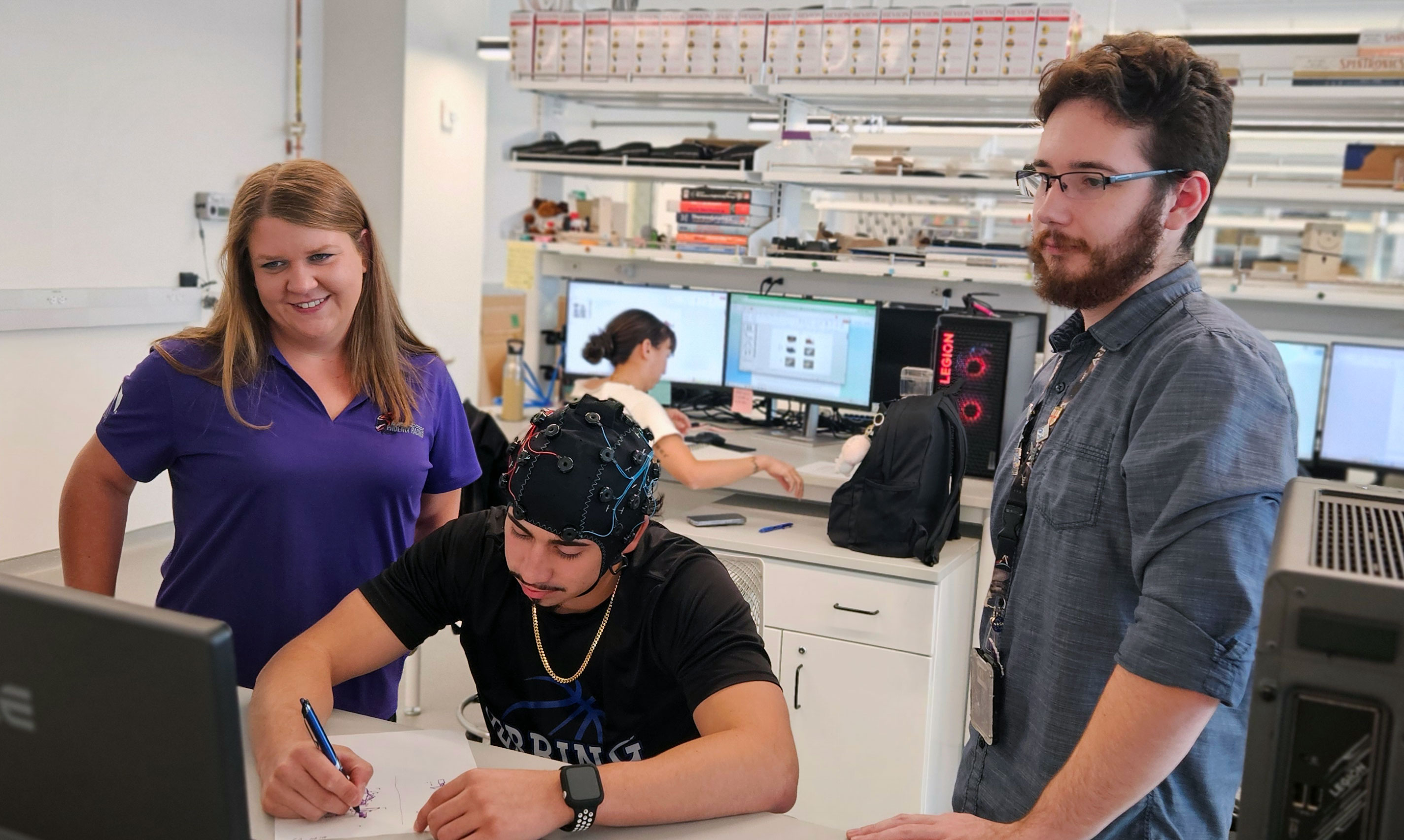
Dr. Elisabeth Kames (left), assistant professor of mechanical engineering at Florida Polytechnic University, received a $200,000 grant from the National Science Foundation to study how students engage with engineering design problems using neurocognitive tools. Senior Eduardo Jirau (center) wears an electroencephalography (EEG) device during problem-solving, while graduate assistant Corey Kado and Kames monitor brain data.
Fueled by a new National Science Foundation (NSF) grant, innovative research at Florida Polytechnic University aims to redefine the way professors approach engineering design education.
Dr. Elisabeth Kames, assistant professor of mechanical engineering, received a $200,000 grant to study how students cognitively engage with engineering design challenges. The research will employ neurocognitive tools such as electroencephalography (EEG), as well as traditional self-assessment tools to uncover insights into student problem solving and learning behavior.
The results will contribute to a deeper understanding of how students engage with open-ended problems and help shape improved teaching strategies for engineering educators across the country.
“The goal is to inform instructional practices within Florida Poly, strengthen our design sequence, and also apply the findings nationwide to better prepare students for the complex challenges they’re going to face in industry,” Kames said. “This will add a new dimension to how we understand and teach engineering design.”
Kames explained that while traditional university curriculum is structured in a way that leads students to find a correct solution to a problem, engineering design curriculum differs by not having a predetermined correct solution. Instead, it calls for students to work through an open-ended challenge to reach their own solution.
“Examining different approaches to get students to understand what they’re doing, why they’re doing it, and be more cognizant of the steps they’re taking while they’re navigating this process, is a reason why we’re pursuing this research,” Kames said.
As part of the study, more than 200 engineering students will wear specialized caps equipped with electrodes secured in precise positions. As students work to solve multiple engineering design problems, the EEG will measure their brains’ electrical activity.
“We will have data from a student’s entire session, and we can correlate specific brain patterns with student engagement during different stages of the design process, examining varying types of design problem representation,” Kames said.
One graduate and two undergraduate researchers will assist with analyzing the brain activity data as a student completes different tasks, determining which part of the brain is active and the functions it controls, alongside the student’s reflective self-assessment.
“I’m very passionate about this work, so having the resources available to conduct it and disseminate my results is very exciting,” Kames said. “I’m thankful to the National Science Foundation, its Division of Civil, Mechanical and Manufacturing Innovation, and Engineering Design and Systems Engineering program for their generous support of my research.”
This research is supported under the National Science Foundation (NSF) Grant No. 2501443, awarded to Dr. Elisabeth Kames.
Any opinions, findings and conclusions or recommendations expressed in this material are those of the grant recipient and do not necessarily reflect the views of the National Science Foundation.
Contact:
Lydia Guzmán
Director of Communications
863-874-8557